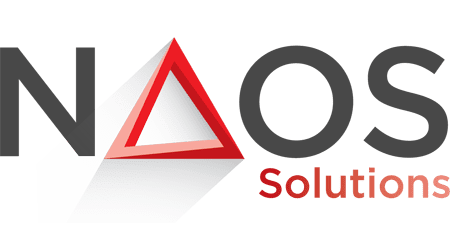In Egypt’s business landscape, HR professionals increasingly consider payroll outsourcing costs as a critical factor in strategic decision-making. With payroll management extending beyond number crunching to include compliance, efficiency, and data security, understanding the financial implications of outsourcing is more critical than ever.

At NAOS CX, we bring a unique perspective to this topic, combining our extensive experience in the payroll outsourcing market with a deep understanding of Egypt’s specific challenges and opportunities. This article aims to provide a clear, comprehensive view of the costs associated with outsourcing payroll functions.
Let’s explore how the strategic decision to outsource payroll can reshape your HR department’s efficiency and cost-effectiveness, ensuring compliance and agility in a dynamic business environment.
OVERVIEW OF PAYROLL PROCESSING CHALLENGES
Time-Consuming Administrative Tasks
Processing payroll involves administrative tasks, such as calculating deductions, managing benefits, and handling time and attendance records, contributing to the workload of HR and finance departments. Managerial permissions and modifications are sometimes required. Because of the mountain of paperwork and individuals involved, this simple daily operation takes time and effort, so errors and inconsistencies are common.

Employee attendance is routinely recorded and time-stamped by card swipe, fingerprints/biometric, punch in and out, or simply by ‘signing in’ one’s name on a worksheet with manual payroll processing. That data must be adequately shared across teams before it can contribute to computing pay and other incentives.
Scalability Challenges
As businesses grow, the complexity of managing an expanding workforce and increased payroll volume becomes a challenge for in-house teams. Scalability often requires additional resources and technology upgrades. Many businesses have also been forced to deal with remote work, which necessitates coordinating schedules and remote payroll management across multiple locations.
Data Security
Payroll processing involves handling employees’ sensitive personal and financial information, such as social security numbers, bank account details, salary information, and personal identification details. Any breach of this data can have severe consequences, including identity theft and financial fraud.
Payroll data is a lucrative target for cybercriminals. Companies must guard against cyber attacks, including phishing, malware, ransomware, and hacking attempts. The complexity and sophistication of these attacks are constantly evolving, making it challenging to ensure robust defense mechanisms.

But make no mistake, not all threats are external. The lack of employee training on data security or employees’ misuse of data, either accidentally or maliciously, poses a significant risk for companies, including improper access controls or credentials sharing.
Proper storage and security are critical for payroll processing, which involves vast amounts of sensitive data. Robust data management policies and systems are essential to ensure that the data is only accessible for as long as legally necessary.
Evolution of Technology
An effective payroll software can reduce the problems associated with payroll administration. Still, knowing which technology to use and which to rely on is critical.
Each payroll software candidate should be thoroughly investigated, comparing:
- The software should be able to handle all compliance requirements relevant to your region or industry, including tax deductions, social security contributions, and adherence to labor laws.
- The payroll system must seamlessly integrate with your existing HR, accounting, and time-tracking systems. This integration with existing systems simplifies data management and reduces the risk of errors.
- As your business grows, your payroll system should be able to scale with it. The system should be flexible enough to handle additional employees, new types of compensation, and expansion into new regions with different payroll regulations.
- Payroll data is sensitive and requires the highest security measures to ensure its protection. Therefore, it is imperative to implement a solid security framework that includes data encryption, secure data storage, and strong access controls. Failure to do so may result in dire consequences, including significant financial and reputational damage.
- Generating comprehensive reports and analytics is vital for strategic decision-making and audit trails.
- Consider the payroll system’s upfront and ongoing costs, ensuring it fits within your budget while still meeting all your needs.
- Reliable customer support and adequate training resources are essential for resolving issues and ensuring your team can use the system effectively.
- Research the provider’s track record and stability in the market. A vendor with a solid reputation and a history of updates and support is preferable.
Although technology has made payroll creation more accessible and efficient, this does not guarantee 100% accuracy. Even the most advanced software requires oversight by a knowledgeable individual who understands the nuances of payroll management.
A payroll specialist must correctly configure the software and ensure compliance with constantly changing tax laws and regulations. They are also crucial in customizing the system to align with unique company policies and employee circumstances.

Furthermore, while the software is excellent at processing calculations and automating routine tasks, it cannot intuitively handle complex scenarios or catch subtle errors that could lead to compliance issues. Integrating payroll software into a company’s operations does not eliminate the need for a payroll specialist.
THE TRUE COST OF IN-HOUSE PAYROLL
The in-house payroll process holds hidden burdens and overt expenses. One must delve beyond the surface level and uncover payroll management’s direct and indirect costs to understand a balance sheet truly.
Direct Costs of In-House Payroll Processing
Beneath the seemingly straightforward task of payroll processing lies a complex web of financial commitments.
Employee Salaries (HR Specialists and Accountants)
Skilled HR specialists and accountants are at the forefront of the payroll landscape. Their expertise in deciphering complex tax codes, handling employee benefits, and ensuring compliance with ever-changing regulations demands proportionate compensation. The salaries of these professionals make up a significant portion of the direct costs associated with in-house payroll.

Software and Hardware Expenses
The digital revolution has transformed payroll from a manual task to a sophisticated system reliant on software and hardware infrastructure. In-house payroll systems require robust software solutions, licenses, hardware infrastructure, and ongoing maintenance.
These technological investments represent a tangible cost, often requiring considerable initial outlay and ongoing updates to stay abreast of industry standards.
Training and Development Costs for Payroll Staff
In-house payroll management requires staying ahead, which means continual learning and adaptation. The investment in training and development for payroll staff is a direct cost that ensures the team remains well-versed in the latest regulatory changes, technological advancements, and industry best practices.

From workshops to courses, this ongoing education is essential but adds to the overall expenditure of in-house payroll.
Indirect Costs of In-House Payroll Processing
Time Spent on Payroll by Non-HR Personnel
When a company manages payroll in-house, it’s not just the HR or payroll team involved. Various other employees from different departments find themselves dedicating time and effort to payroll-related tasks.
For instance, managers and supervisors frequently spend hours overseeing timekeeping and approval of leave and overtime. IT staff might be called upon to resolve technical issues with payroll software or to ensure data security. Even employees in finance departments may find themselves involved in reconciling payroll expenses or addressing discrepancies.
These additional responsibilities can lead to a significant diversion of resources.
Errors and Inaccuracies Leading to Financial Losses
In-house payroll, susceptible to manual errors, miscalculations, and oversights, may inadvertently lead to financial losses that impact employees and expose the company to penalties. Rectifying these errors demands additional time and resources, amplifying the indirect costs of in-house payroll.

Non-compliance Penalties and Associated Risks
Navigating the tax codes and labor laws poses a constant challenge. Non-compliance can lead to penalties, legal repercussions, and a tarnished reputation. Not to mention, payroll and tax calculations are complicated.
Tax compliance laws are one of the top reasons businesses outsource their payroll. Compliance is only getting more challenging year over year as regulations change.
BREAKING DOWN PAYROLL OUTSOURCING PRICING: UNVEILING THE COMPONENTS
Payroll outsourcing offers tailored solutions, streamlined processes, and strategic financial decisions. As we navigate this landscape, it’s crucial to decipher the pricing intricacies that govern this strategic service.
Payroll Outsourcing Setup Fees: Essential for Efficient System Integration
Where The Journey Begins
When integrating an outsourced payroll system into a company’s existing infrastructure, setup fees often represent a crucial initial investment. The initial fees ensure a smooth transition and professional handling of various items:
- Data Migration
- Integration With Existing Systems
- Customization And Configuration Of The Payroll Service
- Establishment Of Efficient Communication Channels.
However, it’s important to note that not all service providers charge setup fees. The landscape varies, with some providers offering seamless integration without this initial cost.
Ultimately, whether or not setup fees are part of the equation, the focus for businesses should be on choosing a provider that ensures efficient payroll operations and aligns with their financial and operational objectives.
The Strategic Investment: Long-Term Benefits
- Cost-Efficiency: While setup fees represent an upfront investment, they contribute to long-term cost-efficiency. The streamlined processes and tailored configuration result in a payroll system that operates precisely, reducing the likelihood of errors and associated costs.
- Time Savings: Efficient setup expedites onboarding, saving valuable time for both the business and the outsourcing provider. This time-saving aspect translates into a quicker realization of the benefits of outsourced payroll.

Payroll Outsourcing Monthly Service Fees: Tailoring Costs to Your Workforce Dynamics
Definition: Navigating the Financial Landscape
Unlike one-time setup fees, these monthly charges are designed to align with the cadence of payroll processing and the continuous support provided by the outsourcing partner.
The heartbeat of payroll outsourcing lies in the monthly service fees. Tailored to accommodate the workforce dynamics, these fees provide a scalable and flexible cost structure, whether you’re a burgeoning startup or an established enterprise.
Customization for Workforce Dynamics: A Flexible Approach
Payroll outsourcing services often employ a monthly fee structure that can vary based on several factors, including employee count, specific service needs, and workforce dynamics.
- Employee Count-Based Model (100% variable)
This scalable model allows businesses to align their costs with changes in workforce size. The fees are calculated based on factors such as:
-
- the number of employees,
- the types of benefits managed (like medical insurance, including specialized options like dental or maternity),
- the currency in which employees are paid (EGP, USD, EUR, etc.)
- the need for regular visits to the company. In cases where the workforce primarily consists of blue-collar workers, additional services, such as HR specialists visiting the site to handle on-ground tasks, may be included. These complementary services, including the HR team’s time and travel expenses, are factored into the monthly fees.
Businesses with fluctuating employee numbers, such as seasonal industries or those experiencing rapid growth or contraction, prefer the employee count-based model. This model allows them to pay proportionately to their current workforce size, making it cost-effective during periods of fluctuation.
- Hybrid Flat-Rate Models
While a purely flat-rate model is rare, some providers offer a hybrid approach. This model typically includes a base rate, providing some level of predictability in budgeting, but also incorporates variable costs that depend on the employee count or other specific service requirements.
Hybrid flat-rate models are well-suited for companies with many employees and offer diverse employee benefit schemes. The per-employee cost in a hybrid model is often lower, which becomes financially advantageous for larger companies. As the employee count increases, the incremental cost per additional employee tends to be more economical, making it a cost-effective solution for businesses with a high headcount.
COMPARING COSTS: IN-HOUSE PAYROLL VS PAYROLL OUTSOURCING
Usually, when it comes to payroll management, businesses face a critical decision: whether to handle payroll functions in-house or to leverage the benefits of outsourcing. This decision involves thoroughly analyzing costs, risks, and potential efficiency gains.
Therefore, we can investigate a scenario-based comparison to illuminate the financial and operational aspects of in-house and outsourced payroll.
We can work on a scenario for a mid-sized company with growing payroll needs.
| IN-HOUSE PAYROLL | OUTSOURCED PAYROLL |
| Direct Costs | Direct Costs |
A mid-sized company may require dedicated HR specialists and accountants, incurring substantial salary costs.
Investing in payroll software, hardware, and periodic upgrades adds to the financial burden.
Continuous training to update in-house staff on evolving payroll regulations contributes to ongoing expenses. |
A one-time setup fee for the initial integration of the outsourcing provider’s systems with the company’s existing infrastructure.
Based on the volume of employees, a predictable monthly fee covers ongoing payroll processing, tax calculations, and compliance management. |
| Indirect Costs | Indirect Costs |
Non-HR staff spending time on payroll-related tasks diverts them from core responsibilities.
In-house teams are susceptible to errors, leading to financial losses and potential compliance issues.
Fines resulting from errors or non-compliance or delaying compliance with laws and regulations can incur additional costs. |
|
CONCLUSION
As we conclude this comprehensive exploration of payroll outsourcing costs in Egypt, it’s clear that the decision to outsource payroll should not be taken lightly. It involves a nuanced understanding of the direct and indirect costs associated with in-house payroll management and the strategic financial benefits that outsourcing offers.
This article highlights the importance of evaluating all aspects of payroll management costs, acknowledging that the cheapest option isn’t always the most cost-effective in the long run. The insights gained here are crucial for HR professionals and decision-makers looking to optimize their payroll operations, ensuring cost savings and enhanced efficiency and compliance.
Looking ahead, our next article delves into the “Strategic Insights and Compliance Aspects of Payroll Outsourcing,” offering a deeper understanding of how outsourcing can transform your payroll processes beyond the financial perspective.
In the meantime, we invite the HR manager to contact NAOS Talents experts. Our teams will provide you with tailored payroll outsourcing solutions that align with your unique business needs, helping you navigate the complexities of payroll outsourcing with confidence and ease. Contact us today to discover how we can help streamline your payroll processes, ensuring compliance, efficiency, and strategic financial management.
=> For a more detailed guide on how to outsource payroll, explore our dedicated article that provides a step-by-step approach tailored to the Egyptian market.

